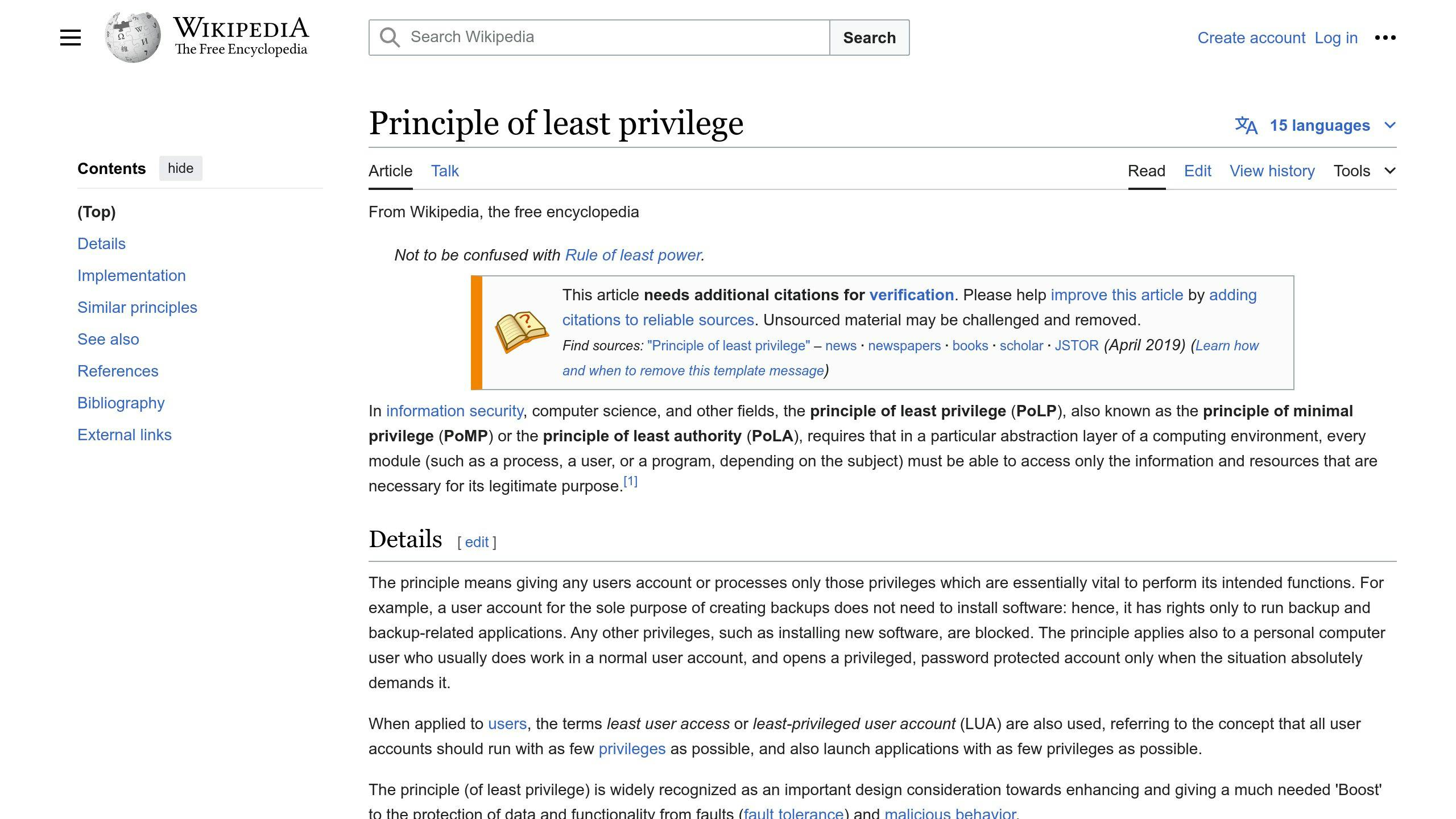Keeping mobile apps secure is crucial in today's digital world. Here's a quick rundown of the top 10 security practices every developer should follow:
By integrating these practices into your app development process, you can significantly enhance the security and reliability of your mobile applications, ensuring user data is well-protected.
1. Start with Secure Coding Practices
Making your mobile app secure begins with writing safe code from the start. Here are some easy ways to do that:
By following these simple steps from the beginning, you can make your mobile app much safer for everyone who uses it.
2. Implement Data Encryption
Making sure data is scrambled (encrypted) is key to keeping a mobile app safe. Here's how to do it right:
Stick to the best scrambling methods - Use well-known methods like AES for mixing up data so only certain people can read it, or RSA for sending secure messages. Make sure you're using the top scrambling standards.
Scramble data all the time - Whether data is moving (like over the internet) or sitting still (stored on a phone), it needs to be scrambled. For data moving, use SSL/TLS to keep it safe. For data sitting still, make sure it's also scrambled.
Be smart with keys - The 'keys' that lock and unlock scrambled data should be kept safe and only given to a few people. Places like Android Keystore or iOS Keychain are good spots to keep these keys.
Check certificates are real - When your app deals with important data, make sure the security certificates are legit to stop hackers from sneaking in. Using certificate pinning is another good move.
Make code hard to read - Mix up the code and any hints to sensitive data to make it tough for hackers to figure out.
Use containers for extra safety - Put parts of your app dealing with important data in a 'container' to protect it in case other parts get attacked.
By focusing on these steps, your app will be a safer place for user data. This not only keeps the information safe but also makes users trust your app more.
3. Exercise Caution with Third-party Libraries
Using code from other people or companies can make your app better, but it can also bring problems if you're not careful. Here's how to safely use third-party code:
With so many software problems reported in 2020, it's really important to use third-party code the right way. Being careful lets you take advantage of others' work without adding risks to your app.
4. Enforce Strong Authentication Mechanisms
Making sure only the right people can get into your mobile app is super important for keeping it safe. Here's how to make your app's login really secure:
Use more than one way to log in - Ask users to give two or more proofs when they sign in, like a password and a code sent to their phone, or a fingerprint. This makes it really tough for bad guys to sneak in.
Skip the password - Let users sign in with their fingerprint or face. It's easier for them and avoids weak passwords.
Ask for login info again sometimes - If someone hasn't used the app for a while or wants to do something important, make them sign in again. This helps keep out people who shouldn't be there.
Keep login secrets safe - Make sure things like session tokens or API keys are stored in a way that nobody can sneak a peek, both on the device and when sending them over the internet.
Double-check what users type in - Always check the info users provide for logging in to stop hackers from trying tricks like SQL injection or getting in without permission.
Use a built-in password manager - Use the password managers that come with phones, like keychain on iOS or keystore on Android, to keep user login info safe.
Watch out for tampered devices - Check if a phone has been jailbroken or rooted to keep such devices from using the app.
Work with SSO - Let users sign in through secure single sign-on options like OAuth 2.0 or OpenID Connect. It's both handy and safe.
Keep track of login attempts - Write down every time someone tries to log in to spot any strange behavior and look into it.
With more and more people trying to hack into accounts, making sure the login to your mobile app is secure is super important. These tips will help keep your users' accounts out of the wrong hands.
5. Secure API Integration
When you add external APIs to your mobile app to make it do more cool stuff, you also have to think about keeping things safe. Here's a simple guide to making sure your API connections don't open up risks:
Check who's asking
Make sure every time someone or something tries to use your API, they prove who they are. It's better to use modern methods like OAuth 2.0 or JSON Web Tokens than just sending API keys, which can be easily grabbed by hackers.
Make sure inputs are clean
Always check the data coming into your API to make sure it's in the right format and doesn't have anything nasty in it that could cause trouble, like SQL injection or buffer overflows. Think of it like making sure your food is clean before you eat it.
Stick to HTTPS
Use HTTPS for all your API stuff to keep the data safe as it moves. This is like sealing your letters in an envelope so no one can read them in transit. Using HTTPS Strict Transport Security and certificate pinning makes this even stronger.
Limit what APIs can see and do
Just like you wouldn't give your house keys to just anyone, don't let your APIs have access to everything. Only let them get to the data and resources they really need. This way, if someone does get in, they can't go everywhere.
Watch how your API is used
Keep an eye on how much your API is being used and look out for anything weird, like a lot of requests all at once, which could mean someone's trying to break in.
Keep APIs protected
Think of putting your APIs behind a security guard (like a reverse proxy or firewall) to check and control who gets in. Also, keep different API parts separate so if one part gets hit, the rest is still okay.
Change passwords and keys often
Change your API keys and access tokens regularly, like how you'd change your passwords, to keep things secure. The more often, the better.
Check for weak spots regularly
Just like you'd check your car before a long trip, test your API connections for any security weaknesses to fix them before hackers find them.
By following these simple steps, you're making it much harder for the bad guys to mess with your mobile app and the data it uses.
6. Apply the Principle of Least Privilege

The idea of "least privilege" is pretty straightforward in mobile app security. It's all about making sure that your app, the people using it, and any process it runs have only the bare minimum permissions needed to do their jobs. Here's how you can make this happen in your app:
By sticking to the least privilege rule, you make your app safer for everyone. It also shows users you respect their privacy and helps keep things running smoothly if something goes wrong.
7. Secure Backend Interactions
Keeping the path between your mobile app and its backend systems safe is super important. Here's how to do it in simple steps:
Use Safe Ways to Talk
Control Who Gets In
Check Everything Carefully
Watch for Weird Stuff
Update Everything Regularly
By making sure the communication between your app and its backend is locked down, you're keeping everyone's data safe from being stolen or messed with.
8. Regular Security Checks and Testing
It's really important to keep checking your mobile app for any security issues and to test it like a hacker would. This helps you find and fix problems before they can cause harm. Here's how to do it in simple steps:
Do security checks often
Test it like a hacker
Focus on the big problems first
Keep checking and watching
Get everyone involved
By making these security checks and hacker-like tests a regular thing, you can stay ahead of problems and keep your mobile app safe from attackers.
9. Teach Users How to Stay Safe Online
Teaching users how to be safe online is really important for keeping everyone's information secure. Here are some simple ways to help users understand how to protect themselves:
Walk them through the basics
Share safety tips regularly
Use clear warnings and reminders
Keep security options easy to find
Encourage good habits with rewards
Helping users understand how to protect themselves online is a big part of keeping everyone safe. Regular tips and easy-to-understand advice can build good habits over time.
10. Stay Updated on Security Trends and Threats
Keeping up with new security threats is a must as hackers and their tricks get smarter. Here are some easy ways to do this:
Keep learning
Automate where possible
Collaborate with the community
Make security improvements ongoing
Staying ahead of security threats means always being ready to learn and improve. By being proactive, you help keep your app and its users safe from the latest dangers.
sbb-itb-8abf120
Conclusion
It's really important to include these 10 security steps when you're making a mobile app. This helps keep the app safe from new and changing dangers. Companies like Zee Palm are leading the way in making apps that are not only great to use but also protect users' information.
Secure Coding Practices
Starting with smart coding, like checking all user inputs and using strong passwords, sets a solid base for a safe app.
Data Encryption
Vetting Third-Party Code
Make sure any code you borrow from others is safe and keep it up to date to avoid security holes.
Authentication Mechanisms
Adding extra steps like codes sent to your phone or using fingerprints makes it harder for the wrong people to get into the app.
API Security
Principle of Least Privilege
Only let your app do what it needs to do, nothing more. This keeps things safer by limiting what can go wrong.
Regular Security Assessments
Keep checking your app for any weak spots and fix them before they can be a problem. This means doing regular tests and updates.
By staying on top of these security practices all through making your app, you can help protect it against the latest cyber threats.








